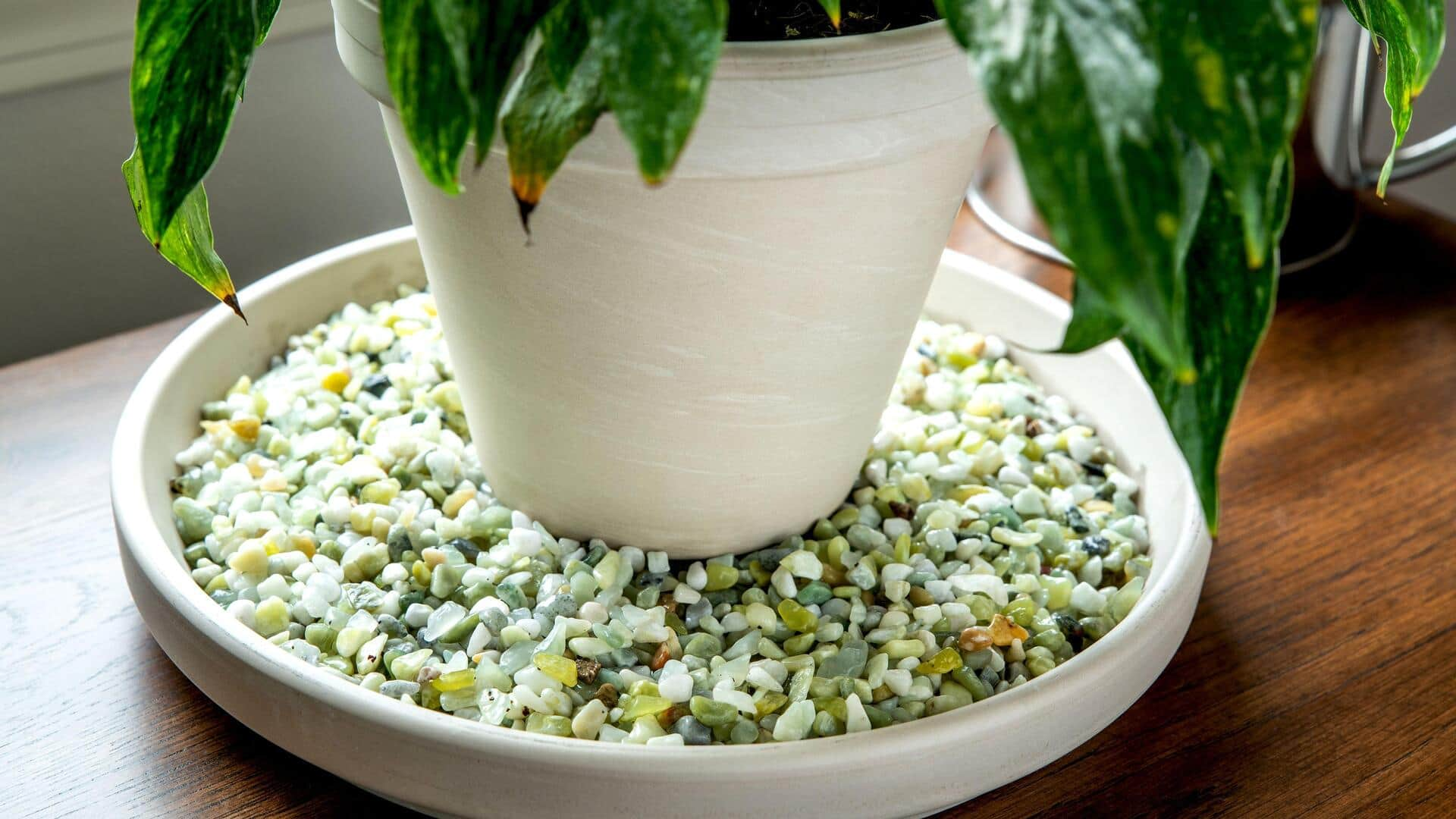
How to use humidity trays for indoor plants
What's the story
Humidity trays are a simple yet effective tool to maintain the right moisture levels around indoor plants. These trays create a micro-environment, mimicking the natural habitat of many houseplants, which tend to thrive in humid conditions. Using humidity trays, plant enthusiasts can ensure their indoor greenery remains healthy and vibrant without constant misting or complicated setups. Here's how you can use humidity trays effectively.
Tray size
Choosing the right tray size
Selecting the right tray size is essential while setting up a humidity tray. The tray should be large enough to fit your plant pots while leaving room for water and pebbles. A shallow dish or baking pan can work well, as long as it comfortably fits under your plant containers. Make sure to leave enough room between pots to allow air circulation. This prevents mold growth and keeps plants healthy.
Pebbles layer
Adding pebbles or stones
To prepare a humidity tray, begin with adding a layer of pebbles or stones at the bottom of the tray. This layer serves as a barrier between water and the base of your plant pots. It prevents root rot from direct water contact. The pebbles also increase surface area, making evaporation easier. They improve humidity levels around your plants.
Water level
Filling with water correctly
Once you've added pebbles, fill your tray with water until it's just below the top of the pebble layer. This way, only evaporated moisture reaches your plants, instead of drenching them directly. Check and refill water levels regularly as required, to keep humidity consistent without over-saturating the environment.
Humidity check
Monitoring humidity levels
When using trays indoors, it's essential to monitor humidity levels regularly. Take a hygrometer to measure ambient moisture around your plants, ideally aiming for 40% to 60% depending on species requirements. You may need to make adjustments depending on how the season is or if certain plants require more humidity. You can add more trays, if needed, to achieve optimal conditions without overloading individual setups.